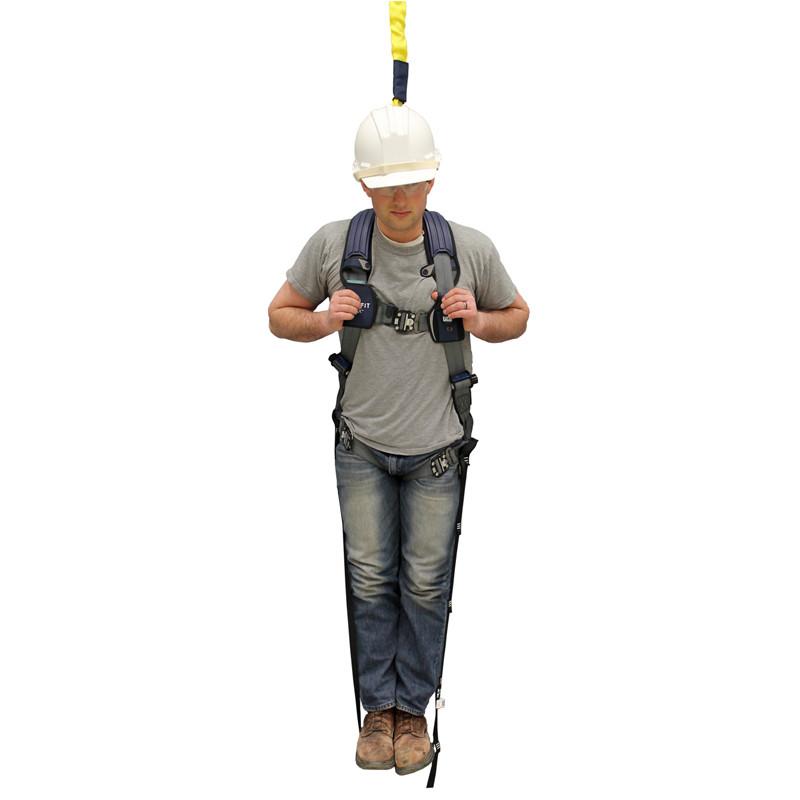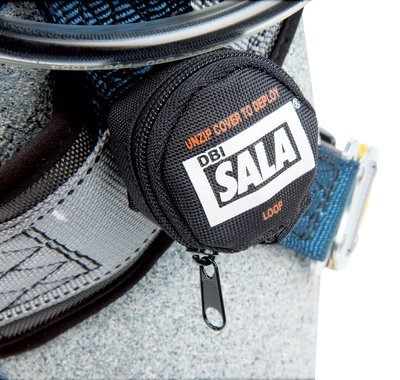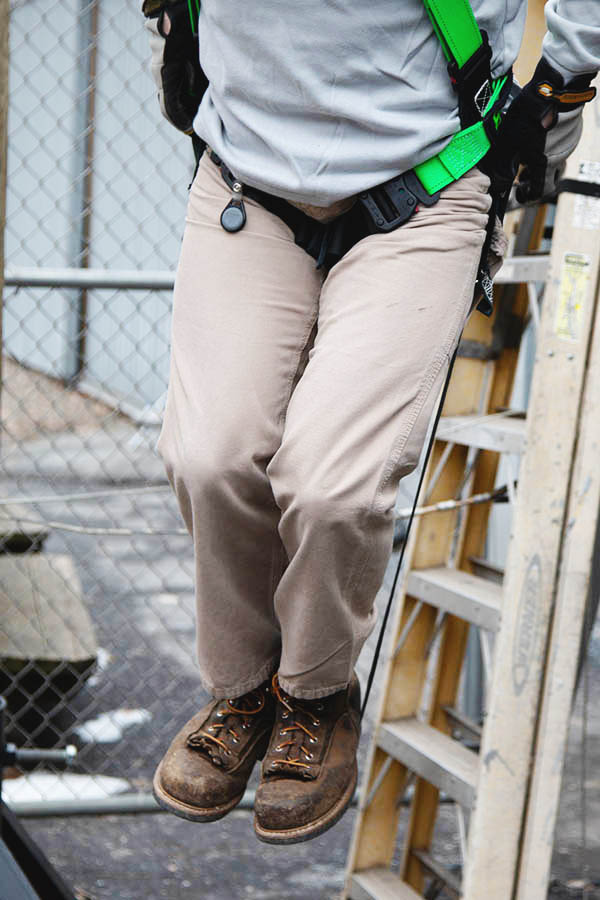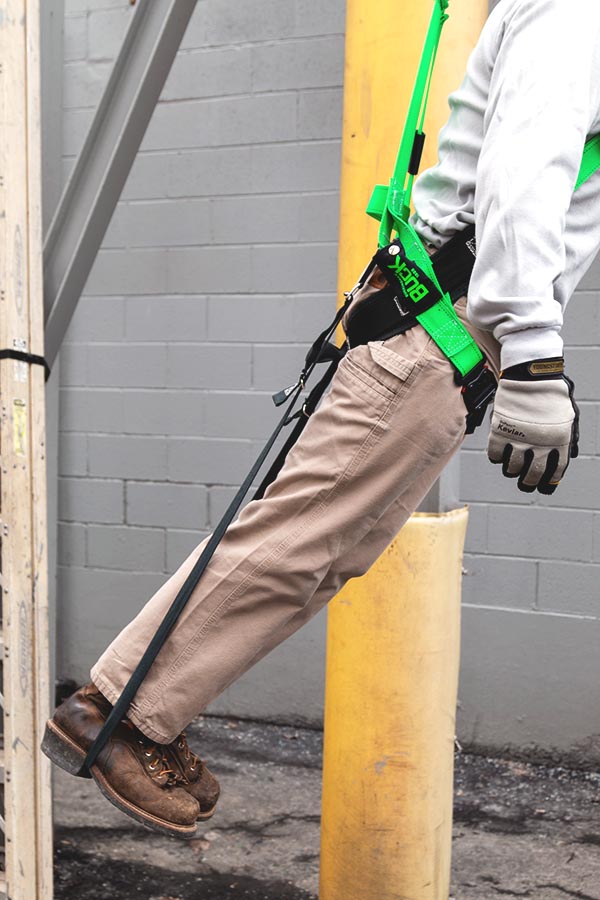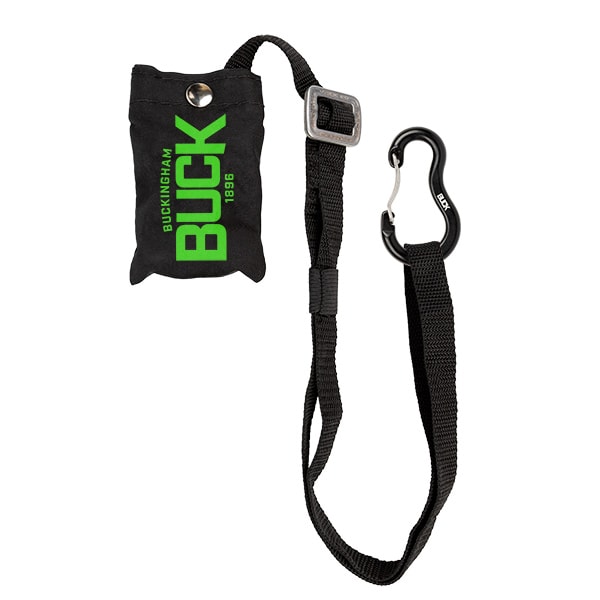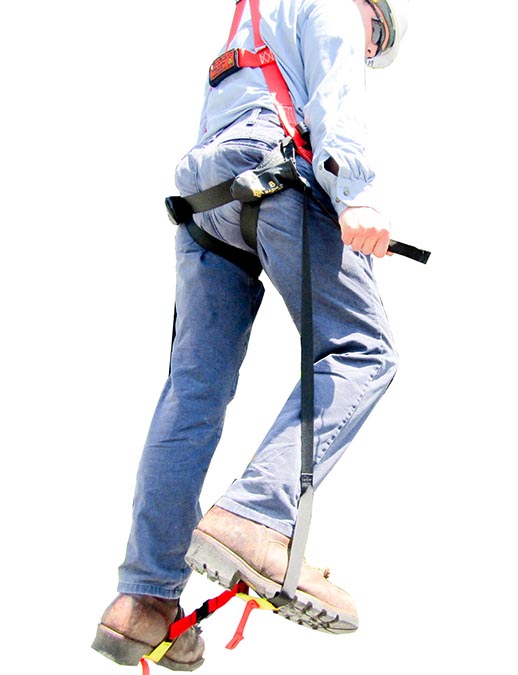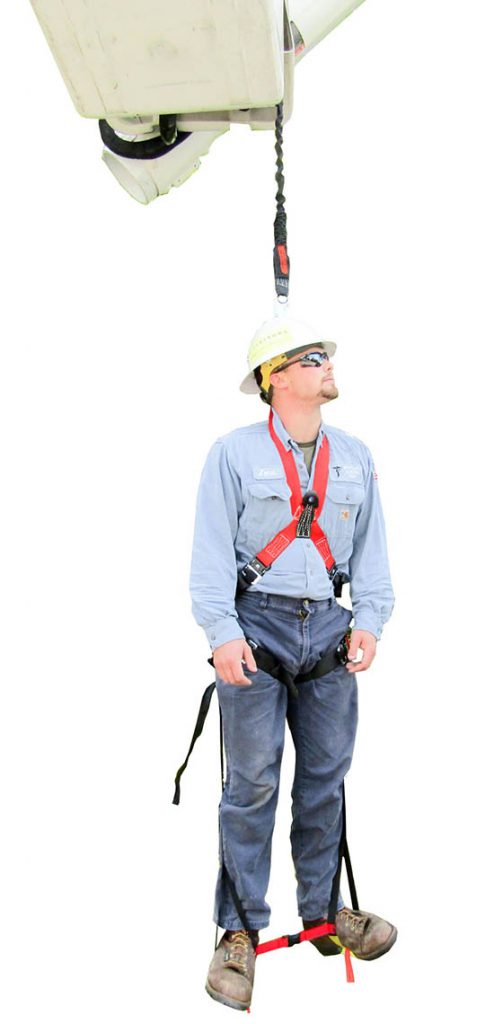You’re filling out your pre-job brief, or “tailboard”. The crew is cutting up in the background, giving the apprentice a hard time about something, and you’re working on your second, or third (no judgement here) cup of coffee. Minimum approach distances, where to spot the trucks, and number of line hoses you’ll need are running through your mind while you’re checking all the little boxes on the sheet. You get around to the box designated “Fall Arrest.” All your guys wear a harness while they’re in the air, so you check the box without giving it much thought. A no-brainer. Or is it?
Now, the old-timers may remember when a climbing belt and a scare strap were an adequate form of fall arrest while in the bucket. Tell that to a fresh apprentice and watch his eyes glaze over. We’ve come a long way since then, but have we come far enough?Is your harness doing everything it can to keep you as safe as possible while you’re up in the air? New research regarding suspension trauma for linemen suggests that most of the harnesses that are hanging in our bins leave a lot to be desired.
What is Suspension Trauma?
The femoral artery is the super highway of the body’s cardiovascular system, delivering oxygen-rich blood from the heart to the lower extremities and then back to the heart. It’s located in the thigh, buried under the muscles in your groin, directly beneath the leg straps of your harness. If you ever find yourself hanging from your harness, your bodyweight will turn the very tool that just saved your life into a death trap, cutting off blood circulation to the body, and depleting oxygen to the brain.
Most studies suggest that it takes only minutes from the time of a fall before this loss of blood flow and restriction of oxygen causes unconsciousness and eventually, death.
Who is at Risk for Suspension Trauma?
Obviously, anyone working from an elevated height and wearing a harness is at risk of falling and suffering suspension trauma, but some linemen are more susceptible than others. In a crew setting, if a lineman were to experience a fall from a bucket, chances are that members of the crew would be able to get him to the ground before suspension trauma became life threatening. However, many lineworkers perform their duties alone.
Servicemen, or troubleshooters, are the unseen responders immediately following a storm or any other event causing a loss of power. They are first on the scene of an outage, troubleshooting and repairing open-wire secondary circuits and finding bad transformers. They notify linemen crews about what material and equipment is needed to perform large-scale repairs. If a serviceman working a callout in a dark alley were to suffer a fall from a bucket, it could be hours before he is found. Although having a cell phone available helps combat this issue, help may not arrive soon enough to prevent suspension trauma. A ground hand, or spotter, available to perform bucket rescue in the event of an emergency is a luxury that not all linemen have, and those who work alone need to have a means of saving themselves from suspension trauma in the event of a fall.
Suspension Trauma Equipment for Linemen
Being that lineworkers are at risk for suspension trauma and are often put in unfavorable environmental conditions, the following suspension trauma equipment for linemen can help mediate the chances of injury and decrease risk.
DBI SALA Suspension Trauma Straps
DBI Sala’s Suspension Trauma Straps work on just about any harness that is in use. If a fall from a bucket were to occur while wearing this, the lineman would be able to deploy the pre-adjusted strap, and hook it across the body on the opposite side of the harness, giving him a means of transferring weight from the thighs onto the trauma straps. This would allow blood to flow through the femoral artery until help arrives. It’s lightweight, low profile design prevent it from getting hung up as the lineman moves around in the bucket, and it’s zipper deployment system makes it fast and easy to use.
Buckingham Suspension Trauma Straps/Rescue System
The Buckingham Suspension Trauma Straps give you the option of choosing FR or non-FR. The FR option is Arc tested to ANSI F887. The Buckingham suspension straps are a mere 5.5 ounces making it relatively unnoticeable. You’ll move around freely, forgetting it’s there, until the time comes when it is needed. This model is easily deployed after a fall, and the pre-adjusted strap will offer a lifesaving method of eliminating suspension trauma until the lineman is lowered to the ground.
Bashlin Suspension Trauma Ladder
After an arrested fall, the lineman can easily deploy the Bashlin Suspension Trauma Ladder giving him a place to stand. It’s stored on the lanyard at all times with a double locking snap, so the lineman won’t notice any unnecessary bulk or weight on the harness. But it will be within arm’s reach in the event of a fall. Ladder-like rungs will give the lineman different levels to place his feet, each one offering a different amount of weight transfer from the groin area.
Suspension Trauma and Linemen: Just Another Hurdle
High-crown felt hats were comfortable, but when we learned that insulated hard hats offered better protection from falling objects, we quickly made the switch. Although they may not breathe as well in the summer, FR shirts have replaced cotton t-shirts because of their safety benefits. The reason our safety culture has improved so drastically in the powerline industry over the years is that the professionals in our industry are so willing to adapt to change in the name of safety.
We wouldn’t dream of going back to the days of climbing belts and scare straps in the bucket. There will come a day when we look back to a time before we protected ourselves from suspension trauma, and we’ll realize we were unnecessarily exposing ourselves to a risk that, through innovative products by top name brands in our industry, can be totally eliminated. So, the next time you reach into your bin and grab that harness, ask yourself if it’s really protecting you the way it should.

